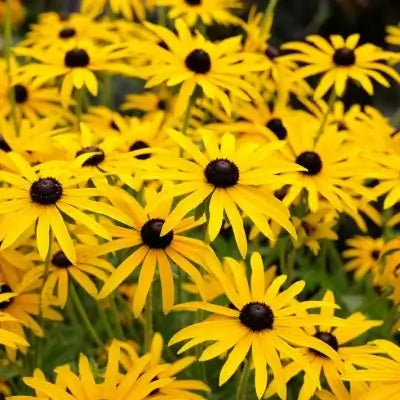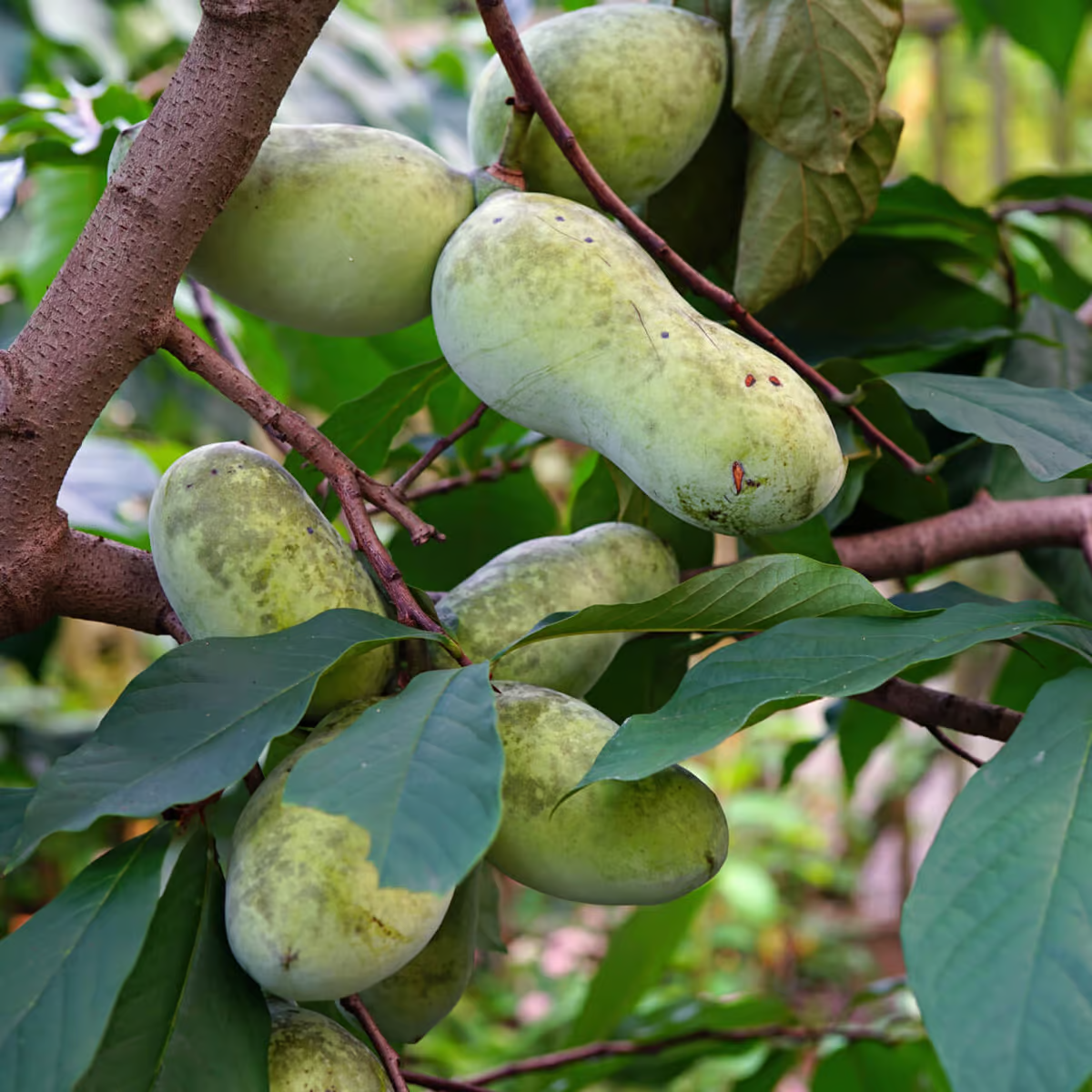
Perennials
Supports local wildlife and pollinators
Beautiful foliage with seasonal interest
Grows well in shaded areas
Thrives in
ZONE 5ZONE 6ZONE 7ZONE 8Planting Season:
Nov-AprilWhen you add one plant to cart, it automatically adds the second one free on Bogo deals.
The Pawpaw tree is a small deciduous type with large, tropical-looking leaves and greenish-brown, banana-like fruits. It is known for its unique flavor and suitability for North American temperate regions. It is one of our hottest sellers because of its native fruiting abilities, distinctive appearance, contributions to biodiversity, potential for edible fruit, ability to create natural habitats, and role in promoting ecological balance, which makes it a valuable addition to outdoor spaces. One of the key advantages of using it in landscaping is its distinctive appearance.
Ours are already pollinated when shipped, and we guarantee they will bear fruit when they are mature.
Where do they grow best?
They grow best in USDA hardiness zone 5-8 on neutral to moderately acidic well-draining loam soil, deep and rich loam soil. They like full or part shade, often river valleys or forest but not in the major canopy.
When is it possible to get fruits from them?
They generally take between 4-8 years to start producing fruits based on the environment and type. Grafting also helps in reducing the time taken before fruiting.
How can we best fertilize them?
10-10-10 - A slow-release, balanced fertilizer should be spread on them when they are in flower. Fungicides should be used sparingly, nitrogen in particular being the main one which stops fruit production.
How long do they live?
They are said to live for about 60 years if allowed the best possible growing conditions, but they can live much longer. Usually fertile for about 25-35 years of their reproductive life.

Bloom Season
Spring
Bloom/Foliage Color
Purple
Height at Maturity
Under 25 Feet
Care
Pawpaw trees thrive in well-drained, rich soil. Water regularly, particularly during dry periods, and mulch to retain moisture. Prune in late winter to shape and release any dead wood. Protect from pests and diseases to ensure healthy fruit development.
Plant Reproduction
Paw Paw Tree spreads through root suckers and seed dispersal.
Plant fruit trees in early spring or late fall when the weather is cool. Choose a sunny location with well-drained soil. Dig a hole twice the width of the roots and double as deep as the root system. When the tree is put in the hole, make sure the graft union (a noticeable bump where the tree was grafted above the rootstock) is above the soil line. Put dug-out soil around the tree roots, gently firmly remove air pockets, and water thoroughly.
Water young trees regularly, especially during dry spells, to establish a robust root system. Once established, water deeply and less frequently. Prune fruit trees yearly during the dormant season to remove dead or diseased wood, improve air circulation, and shape the tree for optimal fruit production. Fertilize in early spring and thin the fruit when necessary to prevent overbearing, which can stress the tree and reduce fruit quality.
Shipping date depends on the date displayed and chosen when you order from the product's page.
We only accept returns on plants verified dead. If you think your plants have died, we offer a 1 year warranty, please use use this File a Claim Link to verify dead plants and start with return warranty process.






Delicious Tropical Fruit:
The Pawpaw Tree produces unique fruits colors can include subtle variations of yellow, brown, orange, and green, adding many stunning features to the plant.
Nutrient-Rich Fruit:
Pawpaw fruits are rich in vitamins and antioxidants, offering a healthy addition to your diet.
Lush Foliage:
Its large, tropical-looking leaves add an exotic touch to any landscape.
Native Plant:
As a North American native, the Pawpaw Tree supports local wildlife and promotes ecological balance.
Caring Tips
Each box contains detailed care instructions and information about your product. But here's the basics.
Care Tips
Pawpaw trees thrive in well-drained, rich soil. Water regularly, particularly during dry periods, and mulch to retain moisture. Prune in late winter to shape and release any dead wood. Protect from pests and diseases to ensure healthy fruit development.
Light Requirements
Pawpaw trees flourish in complete sun to partial shade. Ideally, they should receive 4-6 hours of direct sunlight daily, but they can also grow well in dappled shade, especially in hotter climates where some afternoon shade helps prevent leaf scorch.
Hardy Planting Zones
5 • 6 • 7 • 8
How often should I water my plants?
How do I know if my plant is getting too much or too little sunlight?
What should I do to prepare my plants for winter?
What are the signs that my plant needs fertilizing?
How can I prevent pests from damaging my plants?
How do I choose the right plant for my climate zone?